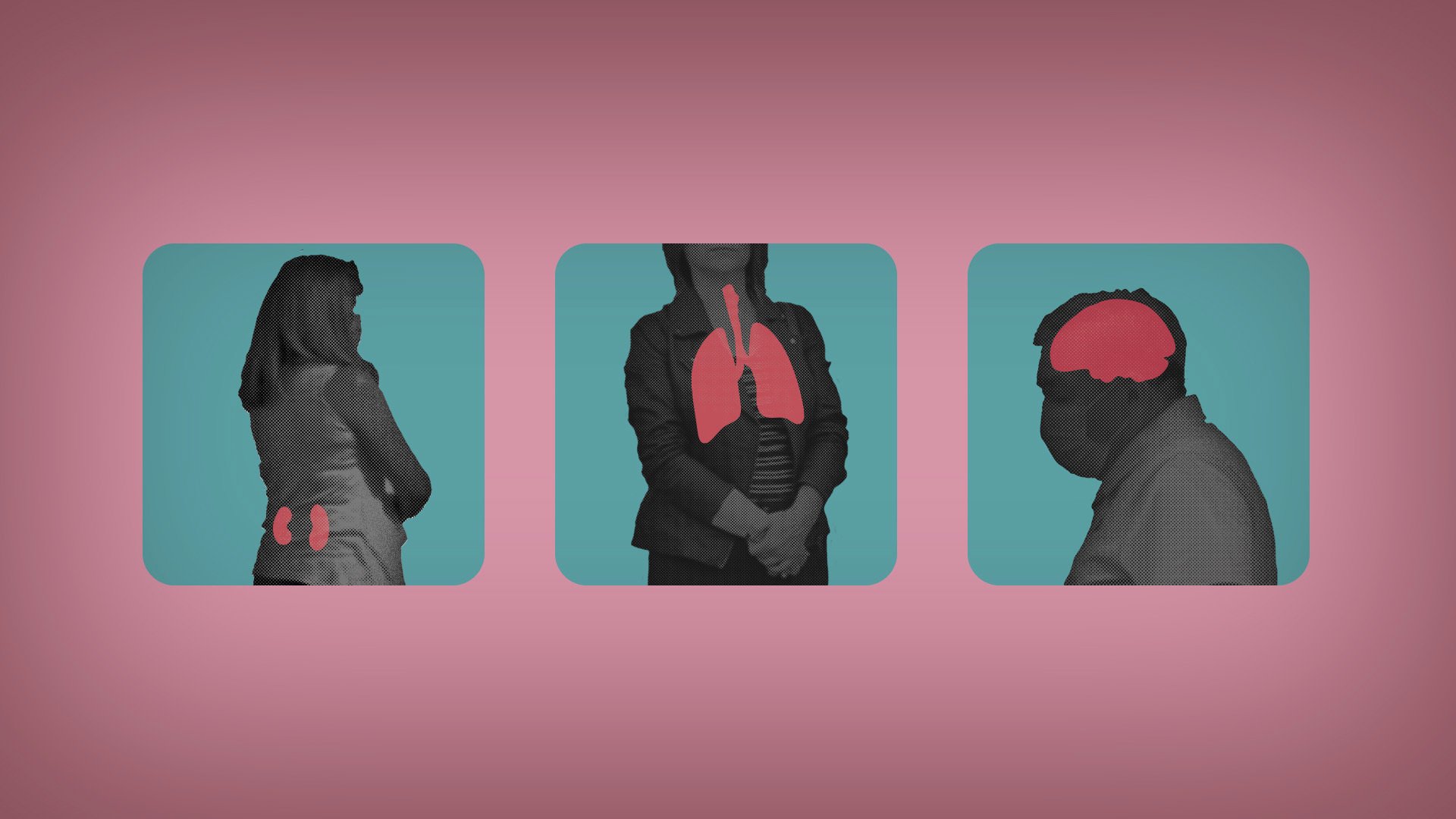
Coronavirus cases continue to surge in much of the United States, where the number of confirmed infections has topped 4.6 million, with nearly 155,000 reported deaths. Florida has surpassed New York to become the state with the second-highest number of infections after California. Almost 66,000 new COVID-19 cases and more than 1,400 deaths from the virus were reported in the U.S. on July 29th, 2020. The toll marks the highest number of deaths from COVID-19 in a single day since May 15. A total of 773 of those deaths were reported by coronavirus hot-spot states Arizona, California, Florida and Texas. Florida reported a state record of 216 coronavirus-related deaths in 24 hours.
In California, healthcare providers say they are again dealing with shortages in testing, which is hitting low-income and immigrant communities the hardest. In Texas, doctors at a rural hospital in Starr County have received critical care guidelines to help them decide which COVID-19 patients the hospital can treat and those whom they send home because they are more likely to die. With the virus continuing to spread out of control, researchers at Johns Hopkins University are calling for a “reset” in the U.S. coronavirus response with universal mask mandates, federal support for expanded testing and a new round of stay-at-home orders in hot spots. And in an open letter published Wednesday, the Association of American Medical Colleges writes, “If the nation does not change its course — and soon — deaths in the United States could be well into the multiple hundreds of thousands.”
Globally, coronavirus cases have now topped 16.2 million and over 650,000 have died since the first cluster of cases were reported in late December 2019 in Wuhan China. Last week, the worldwide caseload jumped by 1 million in just four days. The World Health Organization declared the outbreak the most severe global health emergency the WHO has ever faced.
As European nations scramble to prevent a second wave of infections, Britain has reinstated a 14-day quarantine for travelers coming from Spain. Globally, 11 million people have recovered. For those who survive COVID-19, there’s increasing evidence of long-term organ damage with more studies underway. A new study published by the Journal of the American Medical Association found that of 100 middle-aged patients who recovered from COVID-19, 78 had structural damage to their hearts.
One study group in Italy found that 87% of patients hospitalized for acute COVID-19 were still struggling 2 months later. Data from the COVID Symptom Study, which uses an app into which millions of people in the United States, United Kingdom, and Sweden have entered their symptoms, suggest 10% to 15% of people—including some “mild” cases—don’t quickly recover. But with the crisis just months old, no one knows how far into the future symptoms will endure, and whether COVID-19 will prompt the onset of chronic diseases.
Distinct features of the virus, including its propensity to cause widespread inflammation and blood clotting, could play a role in the assortment of concerns now surfacing. Survivor studies are just starting to probe them. Researchers across the United Kingdom have launched a study that will follow 10,000 survivors for 1 year to start, and up to 25 years. Ultimately, researchers hope to understand the disease’s long shadow and hopefully be able to predict who’s at highest risk of lingering symptoms and learn whether treatments in the acute phase of illness can head them off.
Read more
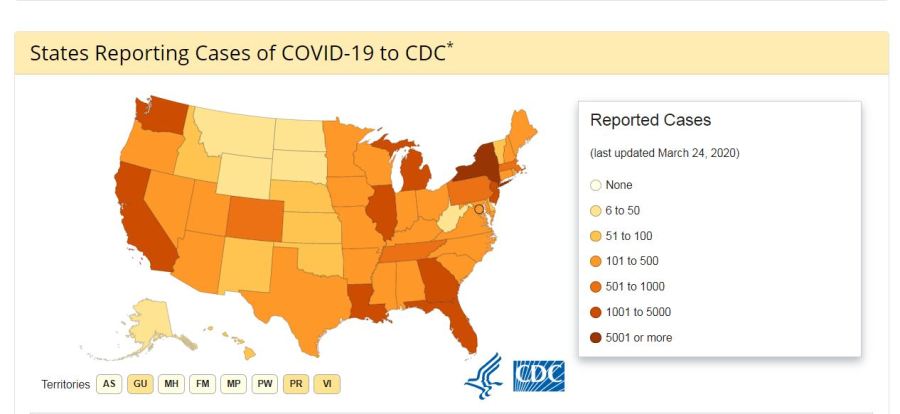
There have been over 15 million confirmed coronavirus cases around the world with 618,000 deaths. Of those cases 8,500,000 have recovered. In the US there are over 4 million confirmed cases and over 145,000 have died in the 6 months since the first case was confirmed in the US. Almost 8,500,000 of the US cases have recovered. The United States has set another grim record for coronavirus infections, with more than 75,600 new cases confirmed. At least 11 states are reporting record hospitalizations, with nearly 1,000 new deaths in just 24 hours. Officials in Texas and Arizona have put out calls for refrigerated trucks, as morgues overflow with the bodies of COVID-19 patients. Texas and Florida both reported their highest death tolls of the pandemic.
As the number of new global coronavirus cases reaches record highs, the World Health Organization is warning the coronavirus outbreak will continue to worsen if governments don’t take basic public health measures. Reports the number of coronavirus deaths in Latin America has now exceeded the death toll in the United States and Canada. Researchers estimate the US will have 219,864 total Covid-19 deaths by November 1, according to the Institute for Health Metrics at the University of Washington.
In Florida, confirmed coronavirus cases topped 300,000 even as Disney World completed a phased reopening of its Orlando theme parks. Nearly 50 Florida hospitals said they were out of ICU beds. In Miami, hospitals have run out of regular intensive care beds, with new patients moved into converted ICUs. Governor Ron DeSantis said he was mobilizing 1,000 medical workers to fill critical staffing shortages.
California, the most populous state and the first to shut down months ago, appeared to have Covid-19 under control — only to suffer a massive resurgence and surpass New York with the most coronavirus cases in the nation. California, which now has 417,000 confirmed cases due to the recent spikes, is largely shutting down again. California Governor Gavin Newsom has a plan to halt the recent surge by ordering all indoor restaurants, wineries, movie theaters and museums to be closed again. Bars have been ordered to cease all operations. Indoor businesses have been shuttered in many areas. Newsom said the new shutdowns are needed to address the public health crisis. The Los Angeles and San Diego school districts have announced that all classes will be conducted online at the start of the school year due to the pandemic.
Covid-19 is set to become one of the leading causes of death in Los Angeles County, according to Barbara Ferrer, the county’s health director. “It’s killing more people than Alzheimer’s disease, other kinds of heart disease, stroke and COPD,” Ferrer said. Comparing Covid-19 to the flu, Ferrer said data shows Covid-19 killed twice as many people in six months as the flu did in eight months.
The city of Atlanta announced a similar plan. In New York, Governor Andrew Cuomo said schools will be allowed to reopen, but only in regions with low daily infection rates. At least 41 states have some kind of mask requirement in place or planned. In Colorado, Governor Jared Polis issued a statewide mask mandate, a week after refusing public health officials’ pleas to require facial coverings in public. Arkansas Republican Governor Asa Hutchinson issued a similar mask mandate. The CDC reports that 10 states have reported 10,000 new cases while three states each reported over 60,000 new cases in the last week.
Several vaccine trials are progressing well, and researchers say a vaccine might be publicly available by early 2021. Health and Human Services Secretary Alex Azar said any Covid-19 vaccine that’s sponsored by the US government will be free or affordable for the American public.
Read more

The World Health Organization is warning “the worst is yet to come” as countries across the globe are experiencing new spikes, with some putting the brakes on reopening. The pandemic is the worst in the Americas, where the number of COVID-19 deaths are projected to nearly triple to 627,000 by October 1. Coronavirus cases have now surpassed 11 million worldwide, with over a half-million deaths. Cases continue to surge across much of the United States, where confirmed cases have now topped 2.8 million, with over 128,000 reported deaths — that’s one-quarter of the world’s cases and deaths, though the U.S. has just over 4% of the global population.
Spikes are being reported in 36 states. Only two states — Connecticut and Rhode Island — saw a decline in new cases compared to the previous week. The United States has set another grim coronavirus record, confirming nearly 52,000 cases of COVID-19 in just 24 hours. Alaska, Arizona, California, Georgia, Idaho, Oklahoma, South Carolina, Tennessee and Texas all reported single-day record levels of the disease with hospitals in some regions already overwhelmed with patients.
At least a dozen states have “paused” their reopening. In California, Governor Gavin Newsom ordered bars in seven counties, including Los Angeles, to close. The governors of Florida and Texas have ordered bars to close, among other restrictions, in an attempt to curb the surge in cases. A major hospital system in Houston reportedly stopped disclosing COVID-19 data after its ICU capacity hit 100%, and following conversations with Governor Greg Abbott in which he expressed concern over negative headlines. Both governors are refusing to impose statewide stay-at-home orders and mandate the wearing of face masks.
More states around the country are imposing new measures and rolling back their reopening as coronavirus cases continue to surge. The governors of Oregon and Kansas are mandating face masks for residents. Jacksonville, Florida, also said it will make face coverings mandatory. Seven cities in Texas say they will impose orders mandating face masks. Meanwhile, hospitals in Texas report a dire situation as cases surge.
Meanwhile, beaches in Los Angeles, as well as several Florida counties, were closed for Fourth of July weekend. Despite skyrocketing cases, crowds still packed many of the open beaches in coastal cities for the Fourth of July holiday weekend, sparking further fears of new spikes.
Officials in Texas, Florida and Arizona say the states’ early reopenings helped fuel the explosion in cases. In California, Governor Gavin Newsom reimposed coronavirus restrictions, shutting down bars and indoor dining in 19 counties that are home to more than 70% of California’s population. In Arizona, Governor Doug Ducey ordered bars, gyms, movie theaters and water parks closed for at least 30 days amid an exponential rise in new infections. New York City has also halted plans to reopen indoor dining at restaurants. New York, New Jersey and Connecticut have ordered travelers from 16 states with high infection rates to self-quarantine upon their arrival.
Read more
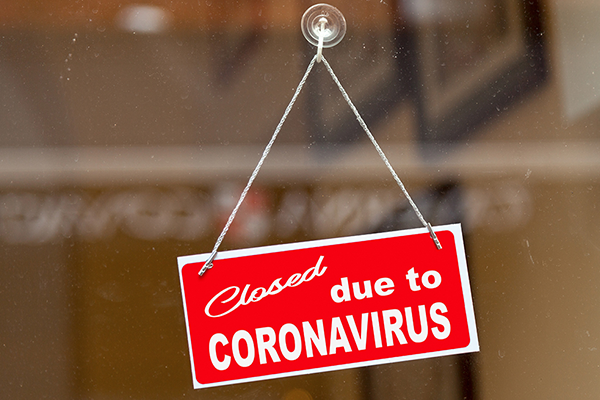
At least 24 states have enacted policies to close nonessential businesses in an effort to slow the spread of Covid-19 in the United States. While guidance varies from state to state, recreational spaces like museums, movie theaters, gyms, day cares, music venues and malls, as well as personal care retailers like spas, nail and hair salons, tend to fall in the nonessential businesses category.
The states with nonessential business shut-downs are Washington, California, Oregon, Nevada, New Mexico, Oklahoma, Louisiana, Illinois, Kentucky, Indiana, Wisconsin, Minnesota, Ohio, West Virginia, Virginia, Pennsylvania, New York, Vermont, Massachusetts, Connecticut, New Jersey, Delaware and Maryland. Other states like Missouri and Kansas have shut down orders in certain counties.
Shuttering nonessential businesses resulted in tens of thousands of American workers losing their jobs in recent weeks. In New York and New Jersey, so many people filed for unemployment insurance over the past week that both states’ online systems crashed. While guidance varies from state to state, recreational spaces like museums, movie theaters, gyms, day cares, music venues and malls, as well as personal care retailers like spas, nail and hair salons, tend to fall in the nonessential businesses category.
In New York, where Gov. Andrew Cuomo on Tuesday warned that the “rate of new infections is doubling about every three days,” essential businesses that remain open include health care facilities, infrastructure and manufacturing entities and essential services like trash collection, law enforcement and homeless shelters. Bars and restaurants can only offer take-out or delivery.
Read more
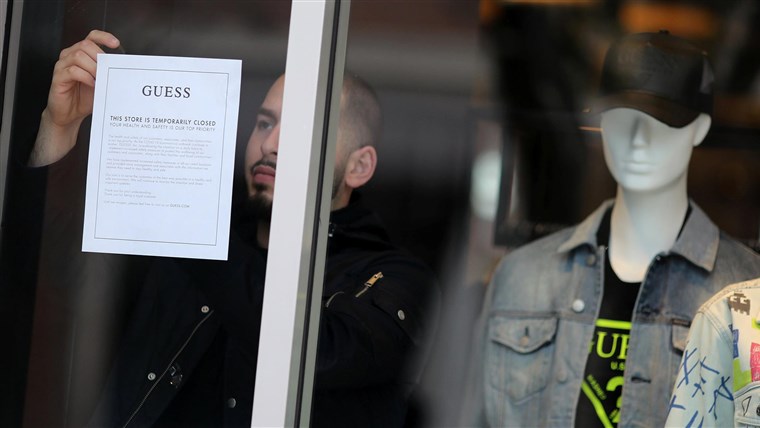
As concerns about the coronavirus rippled across the globe, the US president declared the Covid-19 outbreak a national emergency as public life in America continues to grind to a halt. Schools have closed to millions of students, creating anxiety for working parents across the country. Travel bans have been widened and some cities across America have issued curfews or “shelter in place” orders to slow the spread of the virus. More “shelter in place” orders are expected as the number of confirmed cases continues to rise and has now been found in all 50 states.
Shelter in place orders will come from local government rather than federal. A growing number of countries have also imposed lockdowns that effectively shut down public life, but the details of such lockdowns vary dramatically. Italy banned all public gatherings and set a 6 p.m. curfew but allowed travel for work or health reasons, while in China, millions of residents are restricted from even going to shop for groceries.
The “shelter-in-place” order that San Francisco adopted has fairly large exemptions for health, work, food and even exercise. City officials ordered residents to remain in place at their homes except for essential activities, essential business, and essential government functions, including tasks essential to maintain health and safety, such as obtaining medicine or seeing a doctor or getting necessary services or supplies for themselves or their family or household members, such as getting food and supplies, pet food and supplies necessary for staying at home.
The order also includes:
- Engaging in outdoor activity, such as walking, hiking or running provided that they maintain at least 6 feet of social distancing.
- Caring for a family member in another household.
- Caring for elderly, minors, dependents, people with disabilities or other vulnerable persons.
Treasury Secretary Steven Mnuchin outlined a variety of potential proposals to Senate Republicans as part of a legislative package to help Americans and industries that are reeling from the coronavirus. The administration proposed an initial $250 billion could be sent to Americans as early as the end of April if it can muster congressional approval.
Sen. John Thune noted that getting cash assistance to Americans is something that has historically taken some time, but “I think there are ways now electronically that you can process things more quickly.” The proposal has fairly widespread support from Senate Republicans, who say it will offer immediate assistance to Americans impacted by the virus. Some lawmakers have varying ideas about how the proposal should work, including who should receive the payments and how much each American should get.
Read more

The World Health Organization is warning the number of cases of COVID-19 caused by coronavirus is approaching 100,000 worldwide, with more than 3,100 deaths due to the illness. Most of the deaths and infections have occurred in China, where health officials reported 139 new cases and 31 new deaths recently.
South Korea confirmed 438 new cases, making their total number of confirmed cases over 5,700. Italy has over 3,000 confirmed cases and more than 100 deaths have been reported. Officials have closed down schools in Italy, South Korea, Japan, France, Pakistan, Iran and elsewhere, with nearly 300 million children kept home from school worldwide.
In the United States, there are now more than 300 confirmed cases and the death toll has reached 11 — with 10 of the deaths occurring in Washington state. California recorded its first coronavirus death: an elderly man who traveled on a Princess cruise ship that departed from San Francisco and traveled to Mexico in February. Governor Gavin Newsom has ordered the ship quarantined off the coast of California and is airlifting tests for passengers and crew. Governor Newsom made the announcement as he formally declared a state of emergency across California.
The CDC issued new guidance for clinicians on screening patients for novel coronavirus and assessing their risk for infection. The agency also started shipping its coronavirus assay to labs across the U.S. and in other countries. According to the US Centers for Disease Control and Prevention, 13 states in the US have reported confirmed or presumptive positive cases of COVID-19. Washington State has the highest number of cases with 70 confirmed illnesses and 10 associated deaths. California has 60 positive cases and 1 death.
Of the confirmed cases in California, 42 of them are linked to repatriation or international travel. Cases are rising rapidly in New York, where there are 22 confirmed cases across the state with an additional 24 testing results pending, and 122 individuals under investigation. In response to the rise in cases, the US Senate passed an $8.3 billion bill to fight the outbreak. This came just a day after the bill was approved by the House of Representatives. More than $3 billion is expected to be put into research and development of treatments, vaccines, and testing.
Read more
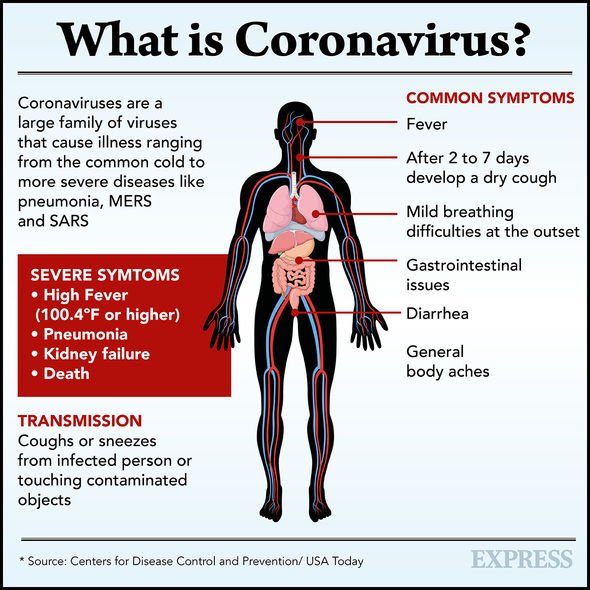
The death toll from Coronavirus (COVID-19) cases has surpassed 3,000 with the number of cases reaching over 90,000. While 51,000 people who have contracted the illness have since recovered, the head of the World Health Organization (W.H.O.) said that the global mortality rate for Covid-19 was 3.4 percent, a figure that primarily reflects the outbreak in China, where the vast majority of cases have been detected.
The organization’s director general, Dr. Tedros Adhanom Ghebreyesus, said at a news conference that Covid-19 is deadlier than the seasonal flu but did not transmit as easily. Dr. Tedros said. “By comparison, seasonal flu generally kills far fewer than 1 percent of those infected.” He added “While many people globally have built up immunity to seasonal flu strains, Covid-19 is a new virus to which no one has immunity,” meaning more people can be infected and some will suffer severe illnesses, Dr. Tedros said. The coronavirus does not transmit as efficiently as the flu but “causes more severe disease.”
While the prospect of being infected with a new virus can be frightening, the CDC warns that the symptoms to look out for are fever, coughing and shortness of breath. These symptoms usually appear between two days and two weeks of exposure to the virus. According to a report in the Journal of the American Medical Association, as many as 98% of COVID-19 patients have a fever, between 76% and 82% have a dry cough, and 11% to 44% report exhaustion and fatigue.
The disease appears to become more severe with age, with the 30 to 79 year-old age range predominating the detected cases in Wuhan. The severity of COVID-19 symptoms can range from very mild to severe. People who are older or have existing medical conditions, such as heart disease, may be at higher risk of serious illness. This is similar to what is seen with other respiratory illnesses, such as influenza.
It’s unclear exactly how contagious the new coronavirus is but it appears to be spreading from person to person among those in close contact. It may be spread by respiratory droplets released when someone with the virus coughs or sneezes. Although there is no vaccine available to prevent infection with the new coronavirus, you can take steps to reduce your risk of infection. Although there is no vaccine available to prevent infection with the new coronavirus, you can take steps to reduce your risk of infection. WHO and CDC recommend following the standard precautions for avoiding respiratory viruses:
- Wash your hands often with soap and water, or use an alcohol-based hand sanitizer.
- Cover your mouth and nose with your elbow or tissue when you cough or sneeze.
- Avoid touching your eyes, nose and mouth if your hands aren’t clean.
- Avoid close contact with anyone who is sick.
- Avoid sharing dishes, glasses, bedding and other household items if you’re sick.
- Clean and disinfect surfaces you often touch.
- Stay home from work, school and public areas if you’re sick.
Read more

The death toll from coronavirus continues to soar, now surpassing 1,700 and overtaking the global death toll from the deadly SARS outbreak in 2002 and 2003. In Wuhan, the epicenter of the disease, the first death of a U.S. citizen was recorded last week. The World Health Organization is warning the coronavirus poses a “grave threat” to the world, as there are more than 73,000 confirmed infections worldwide.
New cases were identified on a cruise ship docked in Yokohama, Japan, bringing the number of confirmed cases on board to over 500. Around 3,700 people have been quarantined aboard the ship where crew members say the workers aren’t being protected from infection. Faced with continuing transmissions on the Diamond Princess, the Centers for Disease Control and Prevention issued new travel restrictions for the ship’s passengers and crew.
After leaving the ship, on which passengers are scheduled to be released from quarantine Feb. 19, all passengers and crew will be required to wait an additional 14 days before returning to the United States. Should an individual from the cruise arrive in the U.S. earlier than that, they’ll be subject to mandatory quarantine until they’ve gone 14 days without exhibiting symptoms or, conversely, test positive. More than 100 Americans remain either on the ship or hospitalized in Japan.
—The Chinese Center for Disease Control and Prevention is reporting COVID-19 is up to 20 times more deadly than the flu, with a fatality rate of about 2.3%. Doctors in Shanghai have started using the blood plasma from some of the 14,000 patients who have recovered from the disease to treat new patients. Chinese doctors are also trying antiviral drugs licensed for use against other infections to see if they might help. Scientists are testing two antiviral drugs and preliminary results are due in weeks, while the head of a Wuhan hospital had said plasma infusions from recovered patients had shown some encouraging preliminary results.
Read more

The Centers for Disease Control and Prevention said it is preparing for the new coronavirus, which has killed at least 1,115 and sickened more than 45,000 worldwide, to “take a foothold in the U.S.” Health officials have confirmed 13 U.S. cases of the virus, now named COVID-19, short for Corona Virus Disease. They are awaiting test results of 61 additional test subjects. A total of 420 people in the US have been investigated for possible infection with 347 testing negative.
Since mid January, the CDC has monitored more than 30,000 travelers coming to the U.S. from China. They have not detected any cases from returning travelers. Health officials are asking the travelers to monitor their own symptoms and limit their outdoor activities. A mistake at a lab led U.S. health officials to release an infected coronavirus patient from a San Diego hospital. The patient had been evacuated from Wuhan. The CDC said there are new measures in place to make sure it does not happen again.
World Health Organization officials have said they are worried about the virus mutating. The coronavirus produces mild cold symptoms in about 80% of patients. About 15% of the people who contract the virus have ended up with pneumonia, with 3% to 5% of all patients needing intensive care.
The city of Wuhan, where the outbreak originated, has ordered residents to report their body temperature daily, and the large port city of Tianjin said it would restrict residents’ movement, part of steps across the country to stop the coronavirus outbreak from spreading. The city is conducting door-to-door inspections as well, and will send someone to check on people displaying a fever, according to a notice posted by the provincial government. People with symptoms will be sent to a community health center for evaluation.
In Beijing, the Chinese government voiced anger as countries placed more restrictions on travelers. More than 50 countries or territories have imposed travel restrictions and tightened visa requirements to contain the spread of coronavirus, according to the International Air Transport Association. The U.S. government has continued to charter evacuation flights for US Nationals departing Wuhan, China. All evacuees spend a mandatory two weeks under quarantine while they’re monitored for symptoms of the flu-like virus.
A cruise ship, the Diamond Princess, is still under quarantine after a former passenger, who disembarked in Hong Kong last month, tested positive for the virus. The ship, which is currently off Japan’s coast, now has 174 confirmed cases of coronavirus as the virus spreads. There are more than 3,700 passengers and crew on the ship under quarantine.
Read more
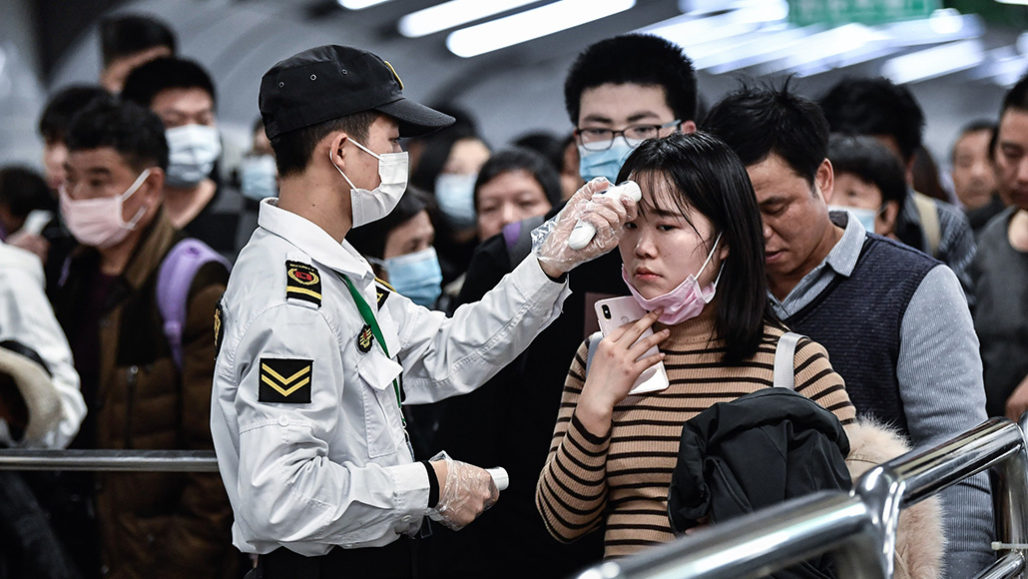
As the outbreak of the mysterious new coronavirus rapidly spreads, the Chinese authorities said that the official count of known cases jumped again overnight, with the death toll now exceeding 400. According to the National Health Commission, the number of confirmed cases increased to over 20,000 but a shortage of test kits has led experts to warn that the real number may be higher.
Officials also announced that after repeated offers of assistance, Chinese authorities agreed to allow in teams of international experts, coordinated by the World Health Organization, to help with research and containment. Government scientists as well as those working at Johnson & Johnson, Moderna Therapeutics and Inovio Pharmaceuticals are all working quickly to develop a vaccine. Hundreds of Americans have been evacuated from Wuhan, the epicenter of the virus, but some of their family members without U.S. visas have been left behind. British Airways has suspended all flights in and out of China.
The U.S. government declared a public health emergency last week and barred foreign nationals from entering the country within two weeks of visiting China, unless they are immediate family members of U.S. citizens or permanent residents. The State Department has warned Americans against all travel to China, and is planning more evacuation flights to bring Americans home from the country this week. Those flights will land at four U.S. military bases, and similar to the evacuation flight that landed in California last week, passengers will be placed under federal quarantine for 2 weeks. The planes will be loaded with medical supplies and humanitarian goods, which the U.S. hopes to deliver to Wuhan on the first leg of the journey.
The head of the World Health Organization Ghebreyesus said some nations are lagging in the global fight against the deadly new coronavirus outbreak. WHO director-general Tedros Adhanom Ghebreyesus accused some governments of wealthy countries of being “well behind” in sharing data on virus cases. “While 99 percent of cases are in China, in the rest of the world we only have 176 cases,” Tedros said in a technical briefing to the WHO’s Executive Board in Geneva. “That doesn’t mean that it won’t get worse. But for sure we have a window of opportunity to act… Let’s not miss this window of opportunity.”
Read more












